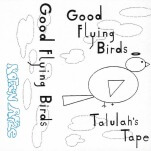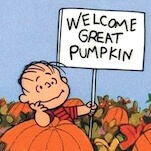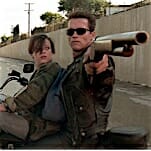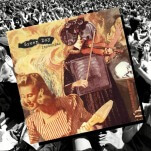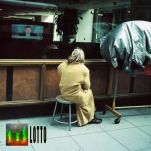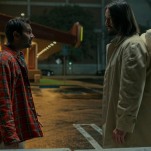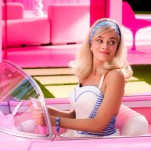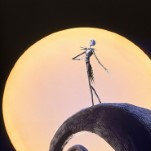Something Doesn’t Feel Right: Doom the Movie at 20
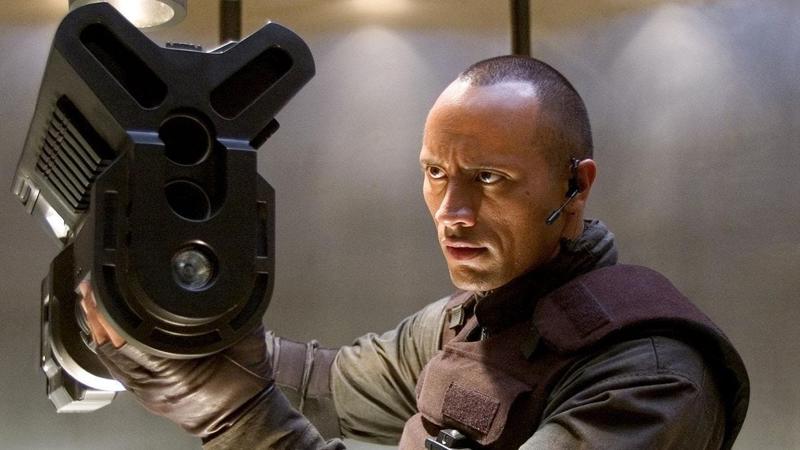
In the 2020s, videogame movie adaptations (Paste has ranked every single one) have undergone an optical makeover similar to what happened to superheroes in the 2000s: from cheap kid’s stuff to cultural products that demand to be taken seriously via budget alone. Of the 10 highest-grossing videogame movies, adjusted for inflation, all but three are from the last six years. In 2023, The Super Mario Bros. Movie became the first game adaptation to smash the $1 billion worldwide gross ceiling. This year’s A Minecraft Movie came close to that benchmark, and succeeded in becoming the year’s most heavily memed film. Games have even crept their way into prestige television—see The Last of Us and its clutch of Emmy nominations.
On October 21, 2005, Doom the motion picture crash-landed onto starkly different terrain. Videogame movies in 2005 are separated from their 2025 descendants by a gulf of worlds. Twenty years ago, we were immersed in the Y2K “Attitude Era”—a term that, in the last few years, has escaped its professional wrestling origins and come to signify the South Park, Eminem, and Mountain Dew-fueled, self-consciously edgy, millennial pop landscape. Just 18 days after Doom’s release in theaters, the launch of TMZ.com supercharged the extra-crass 2000s tabloid culture. The mainstream was not interested in shaping the tastes of 13-year-old white boys so much as elevating those tastes to zeitgeist status.
At some point in the ‘90s, it was decided that same demographic was the core audience for videogames, flattening an industry that once included marquee names like Dona Bailey, Roberta Williams, and Jane Jensen (and the more female-friendly puzzle and adventure genres they pioneered) into a one-dimensional “murder simulator” factory. Consequently, the era’s videogame movies were all hard-nosed badassery and thumping TR-909s, and pushed the content envelope as time went on. Compared to the controversy-courting game series, 1995’s PG-13 Mortal Kombat movie, with its bloodless fatalities, was positively timid. Two years later (an interval during which South Park debuted), Mortal Kombat: Annihilation killed the first film’s hero onscreen in its opening minutes, and cracked several sexist jokes at female characters’ expense. The wave crested in 2002 with Resident Evil, the first R-rated Hollywood video game adaptation. Schlockmeister Uwe Boll followed suit in 2003 with House of the Dead, which upped the ante on gore & tone-deaf ethnic stereotypes.
House of the Dead wasn’t a hit, but it made a profit. Boll’s next two game adaptations, Alone in the Dark and Bloodrayne (both 2005), weren’t so lucky. On the other hand, 2004’s Resident Evil: Apocalypse cleaned up even better than its predecessor. In the R-rated video game movie space, there was only one proven winner, but it was time for a still more iconic game to cock its shotgun.
Enter Doomguys
Doom the game was also having an identity crisis in 2005. At 12 years old, it was no longer new enough to be exciting and not yet old enough to be retro. Modern operating systems were making it harder to run the game’s original DOS executable, and source ports were still the domain of ultra-nerds, so there was no easy way for the casual player to load custom content. Although the siloed Doomer community was enthralled with watershed fan mods like Deus Vult and Scythe 2, the new attraction for mainstream fans was 2004’s Doom 3, a game that brought the aging series in line with then-current shooter standards. Built atop an engine optimized for dynamic lighting effects, the game was explicitly designed to show off those features. This led to a lot of chiaroscuro corridor creeping & demons bursting from darkened crannies, for which many described it as closer to survival horror titles like Resident Evil than classic Doom. Then and now, hardcore fans of the ‘90s games largely do not like Doom 3. The standard dig is something along the lines of “It’s a good game, but it’s not a good Doom game.” Drill down a bit more, and you’ll get some version of, “It doesn’t feel like Doom.”
That sentiment goes double for Doom the movie. The consensus seems to be that Doom 3 doesn’t feel like Doom, but Doom the movie feels like Doom even less. Still, after a decade of development hell with the rights ping-ponging from Universal to Columbia to Warner Bros. and back to Universal, by the time the film entered pre-production, Doom 3 was less than a year old. Lukewarm reception or not, it would be natural for the movie to take its cues from the latest mainline entry. After all, unlike the light-on-narrative ‘90s games, Doom 3 has a fleshed-out story. The film certainly resembled Doom 3 visually, with its muted color palette, more realistic monster designs, and slow stalking through dark hallways lit by flashlight. But, maybe surprisingly, the filmmakers opted for a wholly original story, in an apparent bid to cater to all corners of their audience. Here’s what they came up with:
In 2046, an unknown assailant leaves several scientists dead or missing at a corporate research facility on Mars. Among the marine unit sent to investigate is John “Reaper” Grimm (Karl Urban), whose estranged twin archaeologist sister Sam (Rosamund Pike) works at the facility, studying the remains of an ancient civilization on the otherwise dead planet. It turns out the missing scientists are infected with a genome-rewriting bio-agent, synthesized from archaeological specimens. It transforms them first into flesh-eating zombies and later into mutated monsters. Meanwhile, marine commander Sarge (Dwayne Johnson) goes power-mad, ordering his troops to fire on civilians. With all the other soldiers dead, it’s up to Reaper to stop the infected Sarge from leading an invasion of Earth.
It doesn’t take Doom long to reveal its era’s attitude, with a transphobic slur spoken in the opening five minutes by a greasy sleaze who harasses every woman he sees and serves as the film’s only comic relief character. A few minutes later, a crass joke is made at the expense of a disabled person in a futuristic wheelchair. Near the end of the film when that character transforms into a demon, it’s defeated by severing its spine from the mobility aid with a chainsaw. But these gags, designed to be offensive in the wink-nudge-aren’t-we-edgy style of the time, are less problematic than another plot point the writers likely never considered the implications of.
Perhaps to sidestep the lava pit of religious controversy, the filmmakers dropped anything overtly hellish, replacing demon antagonists with mutants created by an alien serum. This poses its own problems, because the serum does not have the same effect on everyone. Some people turn into monsters, and some get superhuman abilities while retaining their original identities. The difference, says scientist Sam, is that some people have the potential for evil hardcoded into their genes. At the film’s end, when Reaper does battle with Sarge, both are infected with the alien chromosomes, but only the latter has turned monstrous, indicating that his genes were evil to begin with. Given the casting of a white actor as Reaper and a non-white actor as Sarge, it’s not difficult to decode an unpleasant eugenic message.
Because of the creatures’ non-hellish origins, meanwhile, the film dispenses with most of the game’s well-known bestiary, except for the zombies and the “pinky” demon. Shotguns and rocket launchers are nowhere to be found—the only iconic weapons that made it into the movie are the chainsaw and the BFG (here rebranded as “Bio Force Gun”).
But I contend that none of these constitutes the adaptation’s key betrayal. The absence of demons, the genetic determinism, the attenuated arsenal, the tasteless jokes—all could have been forgiven. The real reason the movie doesn’t “feel like Doom” is simpler: There are too many people in it.
The Essence of Doom
The day before I started writing this article, I finished Plutonia on Ultra-Violence.
You are either the type of person to whom this means nothing, or the type of person for whom it’s distinctly unimpressive, so I will clear things up for the former group. The Plutonia Experiment is the second episode of 1996’s Final Doom, the last commercial product from id Software to use the original Doom engine. Plutonia, sometimes sadistic in its difficulty, is considered the hardest commercially-released Doom game, and completing it on the Ultra-Violence skill setting is the minimum milestone for anyone who wants to be taken seriously as a Doomer. I’m still no better than decent at the game, but at least I no longer panic when I see a cyberdemon.
I wasn’t waiting until I’d beaten Plutonia to start writing about Doom the motion picture, but the timing is a nice coincidence. Today, the custom modding scene is at least as important to the game’s legacy as the canonical IWADs—probably more so. Of all the classic games, Plutonia was most influential on the last three decades of fan-made Doom maps. And it’s familiarity with those fan maps that has helped me understand all the things Doom can and can’t be—the qualities that make something “feel like Doom.”
Doom can be Doom without a shotgun (Disturbia), with bioengineered foes (Valiant), and in all kinds of locales. From the IWADs’ mocking abstractions to Plutonia‘s blunt-force cruelty; from the travelogues of Revolution! and Chainworm Commando to Hell Ground‘s gothic romance; from Auger:Zenith‘s popcorn dystopia to the murderlithic grandeur of Sunder & the modern slaughter scene it begat; from the summer-evening sandboxes of Lost Civilization to Unloved‘s fever-dream paranoia; to the dead but dreaming derelicts of A.L.T.—Doom comes in many colors, but all are painted on loneliness. Whether bloodstrewn starbases, forgotten ruins, moldy libraries, voidspawn killfloors or eldritch arenas, Doom is a game of spaces. Given the inability to jump or crouch, and the architecture limited to straight lines, the presence or absence of things in space is the most expressive thing about the game.
Even Doom 3 embodies a certain desolate poetry. Every non-player-character you come across is a spooked and rattled survivor, and occasional oxygen-deprived trips to the windswept Martian surface remind you of the universe’s grinding indifference. In Doom the movie, side characters are wisecracking action movie cannon fodder, and the outside world isn’t even considered.
Doom the movie is both too spare (a surplus of time spent in the same gunmetal corridors without the detailing a skilled Doom mapper would provide) and too populated. Prosaic techbase is fine, but not prosaic functioning techbase. In Doom, the familiar should feel dead, & the living should feel alien. The demons, after all, have brought their reality with them.
“Game feel” is notoriously hard to define but easy to recognize. You can argue that it’s unreasonable to expect a different medium like film to be able to capture it. But there are movies (like Necrostorm’s Hotel Inferno series and the more experimental side of Steven Kostanski) that come a lot closer to the game’s colorful pop-culture pastiche, handcrafted worldbuilding, and essential loneliness than the official 2005 movie.
Doom is a film caught between eras, aesthetics, and art forms. It miscalculates in thinking we want the blood rave scene from Blade. That scene is iconic, but it’s not Doom. Doom’s lost soul is in that same club on Monday morning with the lights on, screams trapped in the chipped paint and dried streaks of leftover gore.
Cullen Wade (he/him) is a writer and high school teacher from Charlottesville, VA, USA. He is the author of S(p)lasher Flicks: The Swimming Pool in Horror Cinema, out in 2025 from McFarland Books. His film writing has appeared in Night Tide Magazine, Horror Homeroom, HorrorGeekLife, and Deaf Sparrow. Follow him on Bluesky @cullenwade.bsky.social and Letterboxd @tobe_whooper.







